Are you at a crossroads, trying to decide between EasyVista vs. ServiceNow in your search for the ideal IT Service Management (ITSM) solution? There are many options, each vying to meet your unique needs and requirements, making the decision-making process a complex challenge.
In this blog post, we’ll embark on a head-to-head ITSM tool comparison between these two formidable contenders in the ITSM arena.
However, no single solution fits all. That's why we'll also introduce you to an alternative platform that might just be the perfect fit for your specific requirements: InvGate Service Management. This robust service desk software is meticulously designed to streamline service delivery and empower organizations to elevate their ITSM practices to unprecedented levels of efficiency and excellence.
Continue reading to discover the ideal solution for your organization's Service Management capabilities.
TL;DR
- EasyVista's users highlight its configuration and customization capabilities, user-friendly interface, efficiency, and workflow editor. However, they dislike its complexity, support and documentation, usability, and integration offering.
- On the other hand, ServiceNow is praised for its cloud-based accessibility, seamless integration capabilities, and continuous product improvements. According to customer reviews, its downside lies in the steep learning curve, high prices, implementation delays, and limited presence in emerging markets.
- Lastly, InvGate Service Management is recognized for its intuitive and modern UX, short implementation times, flexibility, and scalability. It provides users with a visual workflow builder, self-service capabilities, native, third-party, and API integrations, and AI-powered features.
We tried to be as thorough as possible, but if you don't have enough time to read it through and through, here's (another) TL;DR: InvGate Service Management can do everything we say here, and you can test it right away for free for 30 days.
Most looked-at features by buyers
When evaluating ITSM solutions, potential buyers tend to focus on specific features that meet their organization's needs. These desired functionalities are crucial in helping them make well-informed choices.
Let's delve into the key aspects prospective purchasers typically consider when comparing ITSM tools.
- Customization and flexibility - Buyers appreciate software solutions that offer customization options, allowing them to tailor the platform to their unique business requirements. This flexibility ensures the software aligns with their specific workflows and processes, ultimately enhancing user satisfaction and overall effectiveness.
- Pricing and support - Buyers evaluate the solution's cost-effectiveness, considering licensing models, subscription plans, and any additional costs related to features or users. The availability of customer support, documentation, and training resources also significantly impacts their decision-making process.
- User-friendly experience and interface - Prospective buyers consider the user experience and interface of the platform. They pay attention to how easy it is to use and how it contributes to user adoption and productivity. An intuitive interface that facilitates efficient interaction with the software is highly valued. Additionally, organizations with remote or mobile workforces see mobile accessibility as an important factor.
- Ticket Management System - Buyers place great importance on having a comprehensive Ticket Management System within their help desk software. This feature enables effective tracking, assignment, and resolution of customer inquiries and support requests.
- Efficient Asset Management - Users prioritize software that provides robust IT Asset Management to help them maintain accurate inventories and optimize resource utilization within their organizations.
- ITIL compliance - Many organizations follow ITIL best practices for IT Service Management. Buyers may prefer solutions supporting ITIL processes, such as Incident Management, Problem Management, Change Management, and Asset Management, as these processes align with organizational standards.
- Streamlined IT service catalog - Organizations often require a service catalog that allows users to request specific IT services or resources. This feature simplifies service requests, provides visibility into available services, and facilitates effective service delivery management.
- Self-service portal and knowledge base - Buyers highly value the inclusion of a self-service portal as it empowers end-users to independently resolve common issues and access relevant information without needing direct assistance.
- Support automation and Workflow Management - Buyers actively seek software solutions that offer automation capabilities to streamline everyday tasks such as ticket routing, approvals, and escalations. These automation features enhance efficiency and productivity.
- Comprehensive reporting - Buyers seek help desk software with robust reporting tools, including dashboards and reports, to gain valuable insights into their IT operations and performance. This data-driven approach facilitates informed decision-making and continuous service improvement.
- Seamless integration capabilities - Integration with other systems and applications is a critical requirement for buyers, as it ensures smooth data flow and process automation. Integrating with existing tools and platforms is highly valued for improved efficiency and a unified user experience.
- Scalability - Organizations undergoing growth and evolving needs prioritize solutions that can easily adapt to their expansion and allow for customization. It is crucial for the solution to offer the ability to create custom fields, workflows, and extensions/plugins, enabling organizations to tailor the solution to their specific business requirements.
What is EasyVista?
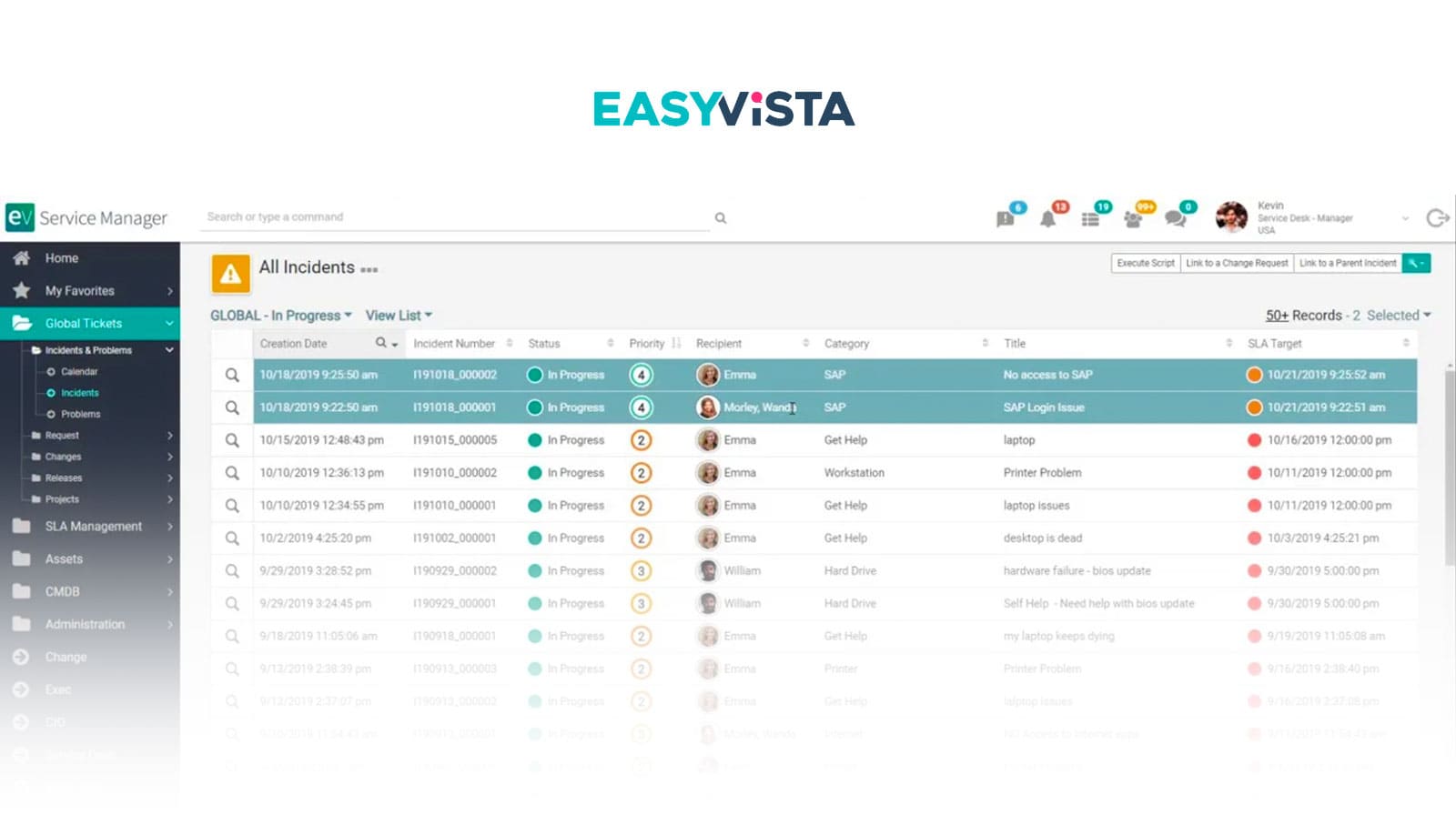
EasyVista is a cloud-based tool that simplifies and improves IT Service Management processes. It incorporates 11 ITIL PinkVerified processes, which encourage business efficiency and consistency.
Previously known as Staff & Line Group, EasyVista is a privately held firm that has been a prominent player in the ITSM field since its founding in 1988. Its inclusion in the 2022 Gartner Magic Quadrant™ for ITSM Tools underscores its importance and reputation in the ITSM industry.
What users like from EasyVista
EasyVista has garnered positive user reviews from reputable industry sources like Gartner. To better understand the platform's capabilities, let's explore some key strengths these assessments emphasize.
- Configuration and customization - EasyVista's codeless configuration simplifies the customization process. Users have found that the platform's provision of groups, roles, and domains streamlines ticket assignment, leading to improved operational efficiency. Regular updates based on customer feedback ensure that the platform remains up-to-date and responsive to evolving needs.
- ITSM features - EasyVista offers comprehensive IT Service Management features, including robust service catalog management. Users highlight the platform's exceptional flexibility, particularly in automating business processes. It excels in promoting centralization, traceability, and visibility of actions, ultimately enhancing the overall ITSM capabilities of organizations.
- User-friendly interface - EasyVista has a user-friendly interface that caters to a wide audience, including customers, IT staff, and administrators. Its incorporation of all ITIL modules adds significant value to the platform. Users have noted that EasyVista contributes to smoother service processing and improved service quality, making it a solution centered around user needs.
- Efficiency - EasyVista distinguishes itself with its ability to enhance work efficiency. It offers support services for agility and consistently delivers high-quality results. These efficiency-driven features contribute to overall productivity and performance improvements.
- Workflow editor - One standout feature of EasyVista is its workflow editor, which effectively translates documented processes into actionable steps. Users appreciate the availability of low-code options and extensive customization possibilities, making it a versatile tool for tailoring workflows to specific requirements.
What users don’t like from EasyVista
While EasyVista hass numerous strengths and positive qualities, there have been user reservations and criticisms concerning specific aspects of the platform. These insights have emerged from assessments conducted by sources like Gartner. Here are some of the issues that have garnered attention.
- Complexity - Users have found that maximizing EasyVista's features requires a clear vision and a deep understanding of the platform, which can be a barrier for some users. The application builder is perceived as less user-friendly, particularly for administrators who may encounter challenges in navigating and effectively utilizing it.
- Integration and modern technologies - EasyVista has received criticism for not embracing modern technologies and falling short of expectations concerning its SaaS version and integration capabilities with other tools. Users often seek more advanced integration features and a smoother experience when collaborating with external applications.
- Functionality and customization - Users have noted that it takes time to fully configure EasyVista to meet their expectations. They have also expressed frustration with the limited customization options for screen elements, which restrict their ability to tailor the platform to their specific requirements. Sluggish performance is another reported issue, particularly when dealing with a large user base.
- Support and documentation - Users have raised concerns about inconsistent vendor support, considering it a notable drawback. Additionally, they have identified vendor documentation as lacking and outdated, which can hinder the platform's effective utilization. Furthermore, updating is often problematic due to insufficient vendor quality assurance and quality control (QA/QC) processes.
- Usability and interface - Some users have observed that EasyVista requires an excessive number of clicks to perform common tasks, resulting in time inefficiency. The platform has faced criticism for lacking intuitiveness, making it challenging for users to locate certain features. Users have remarked that the out-of-the-box back office interface is complex and frequently necessitates customization to streamline usability.
What’s EasyVista’s argument over ServiceNow?
When comparing EasyVista to ServiceNow, several compelling strengths distinguish EasyVista as a preferred choice for organizations seeking a versatile IT Service Management solution.
- Configuration and customization - EasyVista takes the lead with its codeless configuration, simplifying customization processes. With regular updates driven by customer feedback, EasyVista ensures its platform remains up-to-date and responsive to evolving organizational needs.
- ITSM features - EasyVista stands out for offering comprehensive ITSM features. Users consistently highlight the platform's exceptional flexibility, particularly in automating complex business processes. It excels in promoting centralization, traceability, and visibility of actions, ultimately enhancing an organization's overall ITSM capabilities.
- User-friendly interface - EasyVista places a strong emphasis on user-friendliness, offering an interface that caters to a wide audience. The incorporation of all ITIL modules adds significant value to the platform. Users have commended EasyVista for contributing to smoother service processing and improved service quality, aligning it closely with user needs.
- Efficiency - EasyVista's ability to enhance work efficiency is a defining feature. Its efficiency-driven features significantly contribute to overall productivity and performance improvements within organizations.
- Workflow editor - EasyVista's standout feature, the workflow editor, effectively translates documented processes into actionable steps.
What is ServiceNow?
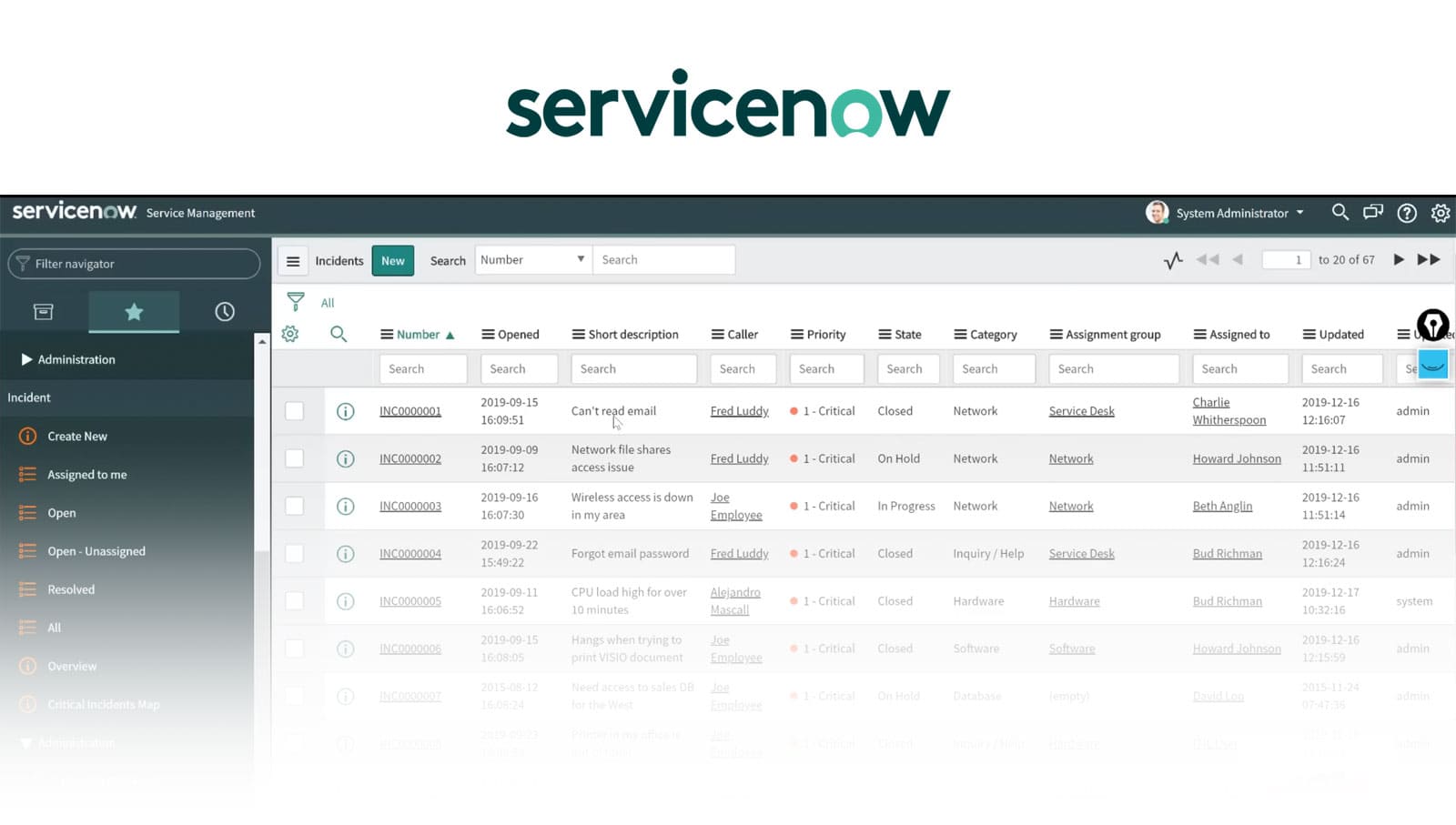
ServiceNow is a company founded in 2004 that specializes in offering cloud-based solutions to simplify IT Service Management and digital workflows for organizations. Their primary goal is to streamline and automate IT operations, enhance customer experiences, and facilitate digital transformation for businesses.
ServiceNow's suite of cloud-based solutions is tailored to cater to various enterprise needs. Their offerings encompass a wide range of areas, including IT Service Management, IT Operations Management, IT Business Management, Customer Service Management, Human Resources Service Delivery, Security Operations, and more. The company has also established strategic partnerships with well-known firms like NVIDIA and Juniper Networks, further solidifying its strong presence in the market.
What users like from ServiceNow
ServiceNow has received positive customer reviews from credible sources such as Gartner and G2. Here are some of the benefits that have been highlighted.
- Cloud-based accessibility - ServiceNow's cloud-based approach offers organizations scalability, flexibility, and accessibility from any location. This cloud-centric model empowers businesses to adapt and grow without constraints.
- Versatile usage across domains - Customers not only employ ServiceNow for IT Service Management but also extend its utility to other domains, including Human Resources (HR), Customer Engagement Center (CEC), Governance, Risk, and Compliance (GRC), and IT Operations Management (ITOM). This versatility enhances its value across diverse organizational functions.
- Seamless integration capabilities - ServiceNow's features enable effortless integration with various systems and applications, ensuring smooth data flow and interoperability. This interoperability fosters efficient information exchange across the organization.
- Continuous product improvements - ServiceNow consistently enhances its products through a combination of acquisitions and internal development. This commitment to improvement is accompanied by a transparent product roadmap, ensuring customers have visibility into upcoming features and enhancements.
- Thriving user community - ServiceNow has a thriving and rapidly expanding user community that holds a strong reputation within the industry. Many customers discover or gain insights about the product through recommendations from their peers, underlining its popularity and credibility.
- Native AI capabilities - ServiceNow harnesses the potential of artificial intelligence (AI) and machine learning (ML) within its platform, providing built-in AI functionalities. These include virtual Agent chatbots and predictive intelligence, which contribute to an enhanced user experience by automating tasks and providing predictive insights.
What users don’t like from ServiceNow
While ServiceNow has a multitude of strengths and favorable attributes, customers have also voiced certain concerns and dislikes regarding the platform. These insights, derived from reviews by sources like Gartner and G2, have brought the following criticisms to the forefront.
- Steep learning curve and complexity for new users - Some users have found ServiceNow's platform challenging to grasp, especially when attempting to utilize its more advanced features. The system's complexity may necessitate additional training and resources to ensure users can effectively harness its capabilities.
- Difficulties and delays during implementation - Organizations may encounter challenges during various stages of the implementation process, including configuration, data migration, or integration. These hurdles can result in extended timelines for full implementation, impacting operational efficiency.
- Challenges in customizing workflows and processes - ServiceNow may have inherent limitations in terms of flexibility and customization options, posing difficulties for organizations striving to tailor the system to their specific needs and unique business processes.
- Mixed feedback on customer support - Some users have expressed concerns about response times and accessibility when seeking assistance from ServiceNow's customer support, indicating room for improvement in this area.
- High licensing costs and potential additional expenses - ServiceNow's extensive functionality and advanced features come at a significant price. Licensing fees can be substantial, particularly for organizations seeking capabilities beyond IT Service Management (ITSM). The total cost of ownership may further escalate due to potential additional expenses associated with customizations or specialized modules.
- Renewal leverage concerns - ServiceNow's dominant market position may limit customers' ability to negotiate contract renewals without compromising existing discounts or terms, potentially limiting flexibility during contract negotiations.
- Limited presence in emerging markets - ServiceNow's footprint in certain emerging markets is limited, characterized by fewer local offices and a lack of hosting options in regions such as the Middle East, potentially restricting its accessibility to a global customer base.
What’s ServiceNow’s argument over EasyVista?
When pitting ServiceNow against EasyVista, ServiceNow presents a compelling case based on several key strengths and attributes that set it apart as a robust IT Service Management solution.
- Cloud-based accessibility - ServiceNow adopts a cloud-centric approach that empowers organizations with scalability, flexibility, and accessibility from any location. This cloud model ensures that businesses can adapt, expand, and evolve without encountering limitations or constraints.
- Versatile usage across domains - ServiceNow's versatility shines as it extends its utility beyond IT Service Management into other domains. This adaptability enhances its value by addressing diverse organizational functions.
- Seamless integration capabilities - ServiceNow excels in facilitating seamless integration with various systems and applications, enabling the smooth flow of data and fostering interoperability. This interoperable ecosystem enhances information exchange and streamlines organizational processes.
- Continuous product improvements - ServiceNow demonstrates an unwavering commitment to product enhancement through a combination of acquisitions and internal development. This dedication to improvement is complemented by a transparent product roadmap, ensuring that customers remain informed about upcoming features and enhancements.
- Thriving user community - ServiceNow has a thriving and rapidly growing user community, renowned for its strong reputation within the industry. This robust user base often serves as a valuable resource for discovering insights and recommendations, underlining the platform's popularity and credibility.
- Native AI capabilities - ServiceNow harnesses the power of AI and ML by embedding native AI functionalities into its platform. These capabilities encompass virtual Agent chatbots and predictive intelligence, contributing to an enhanced user experience through task automation and predictive insights.
Considering InvGate Service Management as an ITSM solution alternative

While EasyVista and ServiceNow are well-known competitors in the ITSM industry, exploring alternative solutions that can better meet your organization's specific needs is essential. In this context, consider paying careful attention to InvGate Service Management.
Let's examine the favorable features of InvGate Service Management that make it a valuable choice for addressing your organization's ITSM requirements.
Streamlined configuration and setup
InvGate Service Management offers a simplified configuration and setup process, utilizing a no-code/low-code approach. This approach allows users, both inexperienced and experienced, to implement the system without requiring extensive technical expertise. The platform expedites setup by providing straightforward configuration options, enabling organizations to quickly leverage its robust ITSM capabilities.
Cost-effective solution
InvGate Service Management delivers a cost-effective solution without compromising functionality. It offers a comprehensive set of ITSM features at a competitive price, making it an appealing choice for organizations seeking affordability without sacrificing capabilities. Compared to alternatives like EasyVista and ServiceNow, InvGate Service Management strikes a balance between cost and functionality.
Powerful self-service functions
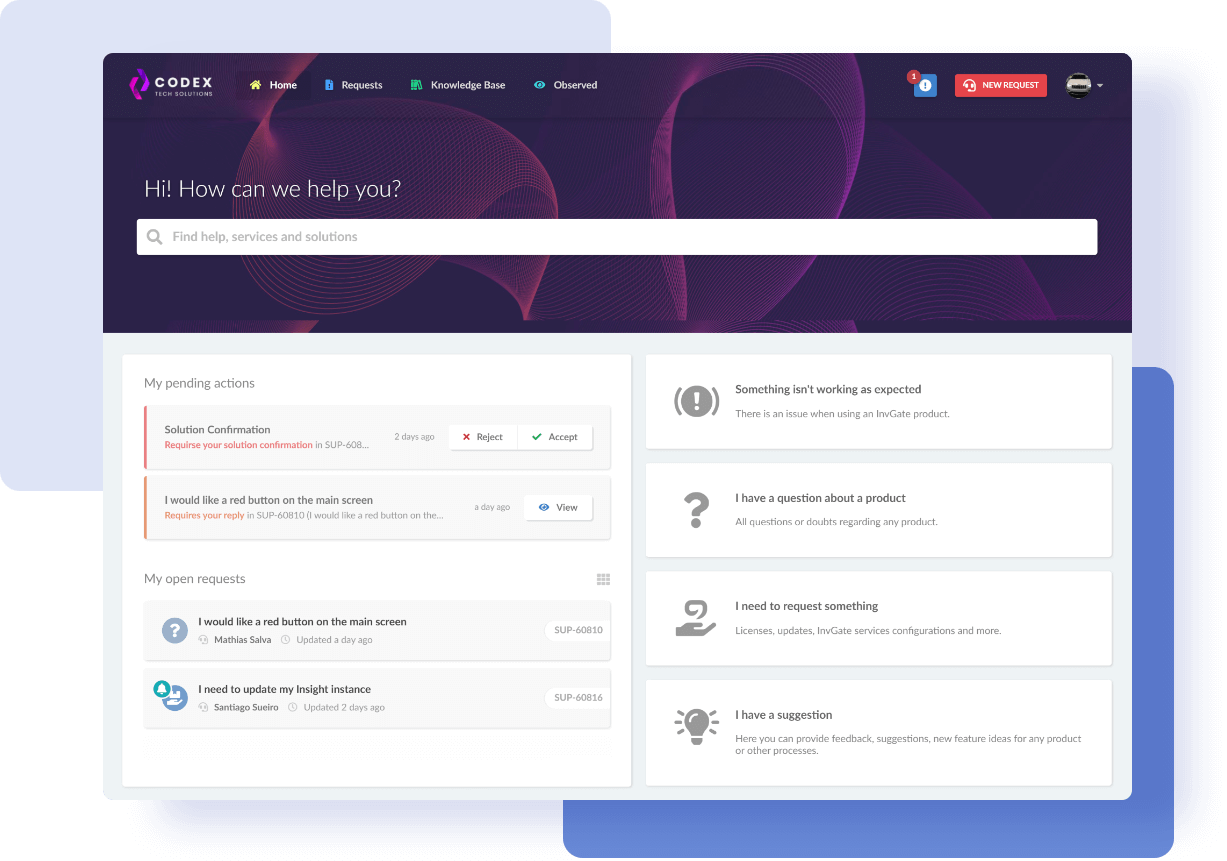
InvGate Service Management incorporates robust self-service functionalities, including a user-friendly portal, an extensive IT service catalog, and a knowledge base. These capabilities empower end-users to independently resolve common issues, access a wide range of IT services, and utilize self-help resources, reducing the workload on IT staff.
Efficient Ticketing and Incident Management
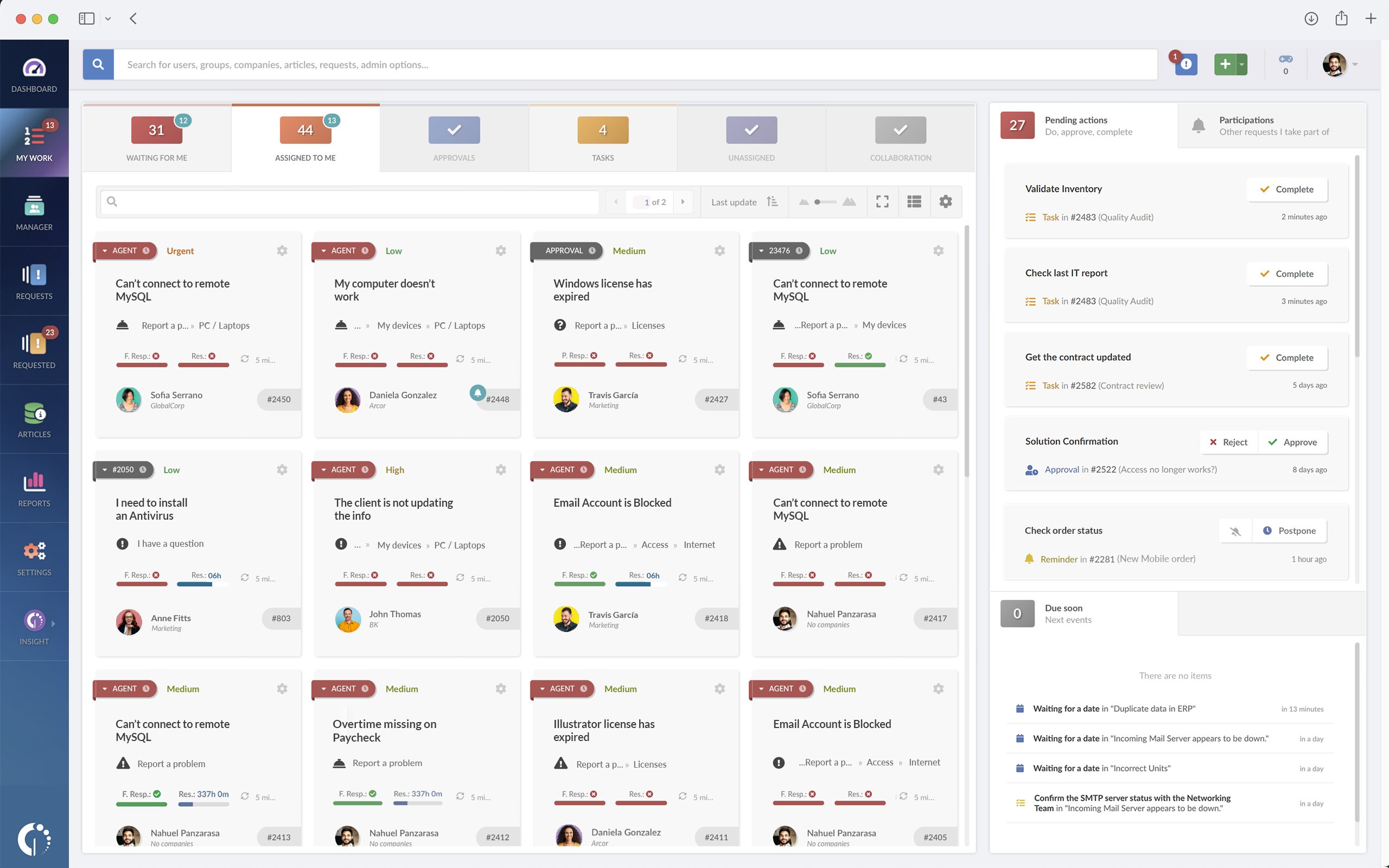
InvGate Service Management excels in providing robust capabilities for handling tickets and incidents. It empowers IT teams to efficiently track, collaborate on, and resolve incidents, enabling effective prioritization. With features like automated ticket routing, customizable workflows, and SLA Management, InvGate Service Management significantly improves the efficiency of incident resolution processes.
Exceptional user experience
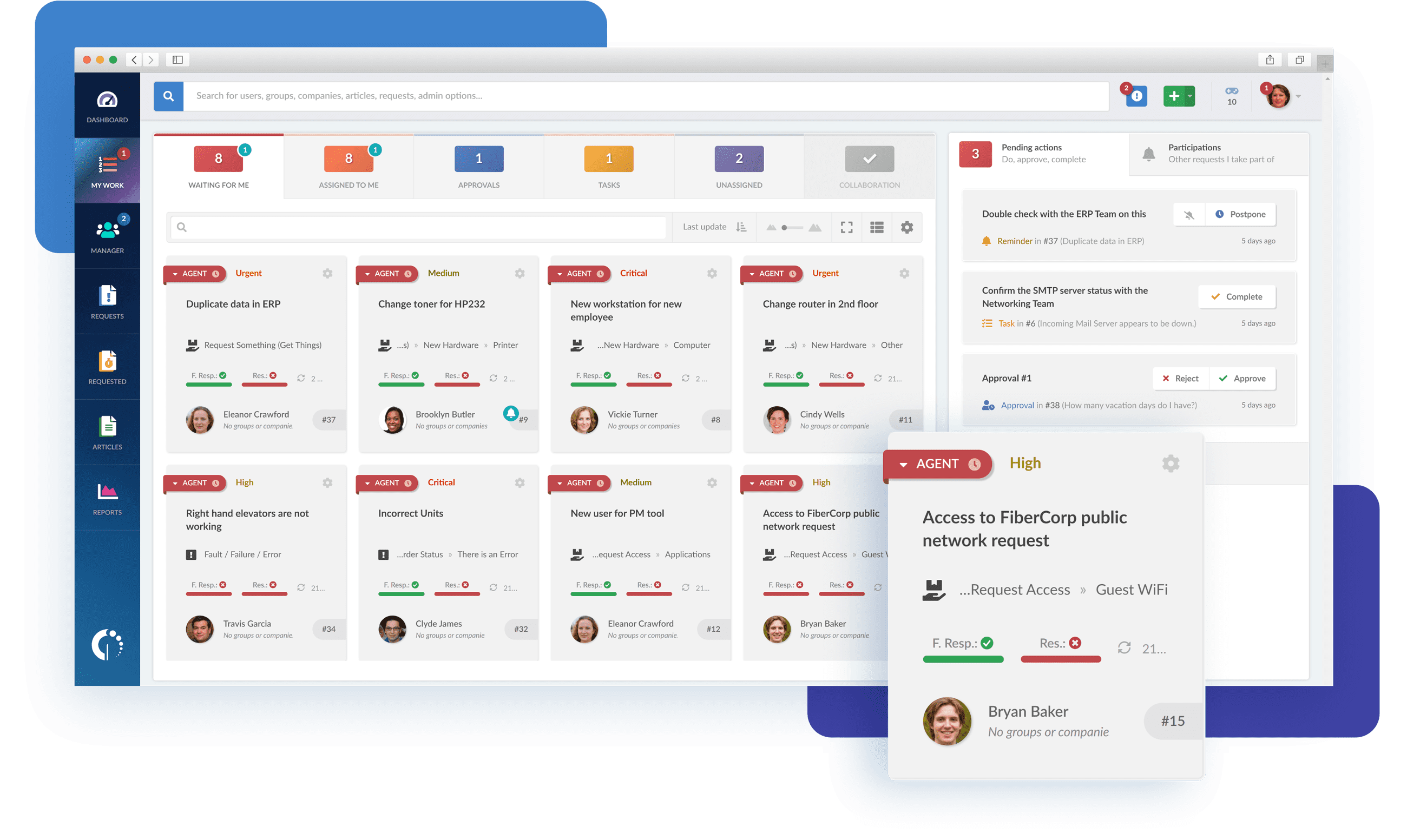
InvGate Service Management places a strong emphasis on delivering an outstanding user experience through careful design and adherence to UI/UX best practices. Its intuitive interface promotes quick adoption, reducing the need for extensive training and enabling users to be productive.
Customization and flexibility
InvGate Service Management provides flexible deployment options, offering organizations the choice between on-premise or cloud-based solutions. This flexibility ensures that the platform can adapt to the specific requirements of various sectors and industries.
Comprehensive reporting and analytics
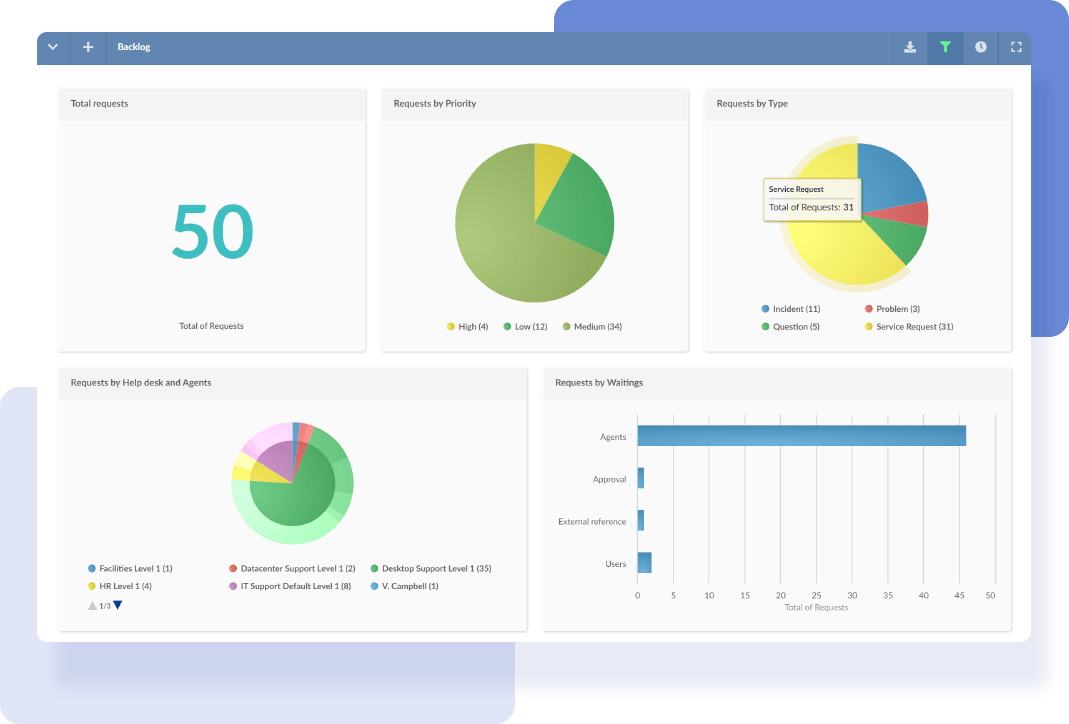
InvGate Service Management offers comprehensive reporting and analytics features, allowing organizations to gain valuable insights into their IT operations and performance. The platform provides ready-to-use reports and customizable dashboards, enabling IT teams to analyze data, identify patterns, and make informed decisions to enhance their services.
ITSM excellence with ESM capabilities
InvGate Service Management is designed primarily for ITSM but seamlessly extends its capabilities to Enterprise Service Management (ESM). This empowers operational departments to improve their processes and fully embrace the benefits of digital transformation. By focusing on ITSM and performing strongly in ESM, InvGate Service Management facilitates streamlined workflows and comprehensive digital transformation initiatives across all departments.
Comprehensive Asset Management
When integrated with InvGate Asset Management, organizations gain a holistic view of their IT ecosystem, leading to better service delivery and reduced downtime. InvGate Asset Management offers various features, including IT Asset Discovery, IT Inventory Management, Software License Management, and maintenance schedules.
ITIL best practice compliance
InvGate Service Management has earned the prestigious PinkVERIFY Certified certification, demonstrating its commitment to upholding ITSM excellence. Whether organizations are starting their ITIL journey or managing complex operations, InvGate Service Management offers a user-friendly and feature-rich experience aligned with industry best practices.
Fast ROI and continuous innovation
InvGate Service Management ensures a rapid return on investment through efficient implementation processes. Within weeks, organizations can begin to realize the benefits of this robust ITSM solution. Additionally, regular feature updates keep users at the forefront of technology without incurring additional costs.
Next steps
In the ever-evolving landscape of IT Service Management, the choice between EasyVista vs. ServiceNow requires careful consideration, as it can profoundly influence an organization's operations and customer support. Both platforms come with their distinct strengths and capabilities, catering to diverse requirements.
However, amid this comparison, it's essential to shine a spotlight on a compelling alternative: InvGate Service Management. This formidable player in the ITSM arena stands out for its streamlined functionalities and robust features, poised to elevate IT services and foster digital transformation within organizations.
For further guidance and assistance in charting your next steps in ITSM implementation, download our free ITSM implementation checklist. With a well-defined plan in place, you can confidently embark on your journey toward enhanced IT services and operational excellence.
















